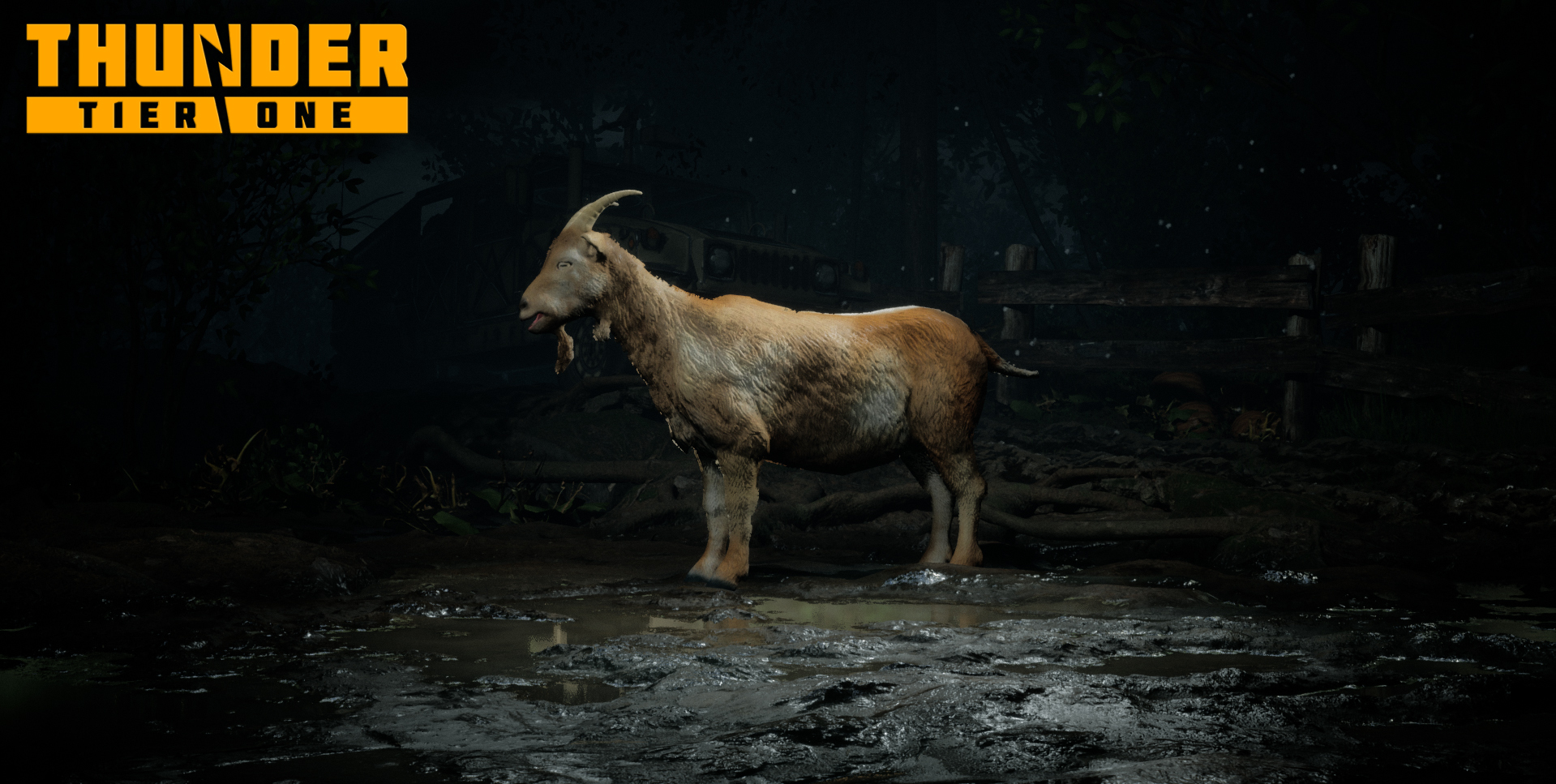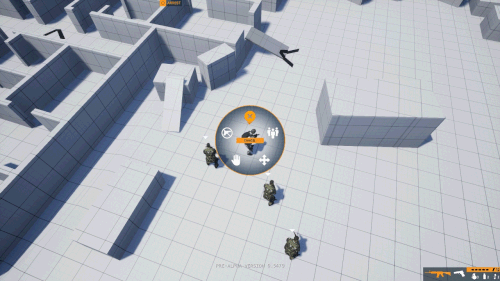Devlog #006
Hello operatives!
The battlefield is an unforgiving place on Thunder Tier One. Ammunition and supplies are often scarce and scavenging for ammo isn’t always an option when bullets are flying over your helmet. However, as an elite special forces squad, Thunder One has added support when needing to resupply and reinforce its unit.
In dire circumstances, once per mission, players will be able to deploy a Tactical Goat – the pet mascot of Thunder One. Equipped with satchel bags filled with supplies, the Tactical Goat can infiltrate behind enemy lines without alerting opposition squads and deliver supplies to the task force. Despite being stealthy, the Tactical Goat is not invisible and may be fired upon if the enemy spots it.

During engagement, the Tactical Goat's speed and agility will help him avoid direct contact with enemies and, if hit, the Goat will recover some health by eating certain parts of the map - something we'll explain in a forthcoming devlog.
So, make sure you keep your mascot safe and your soldiers resupplied.
We'll be beck with more news about Thunder Tier One soon. In the meantime, join us on Discord to get the news first-hand.
STORM OUT
The battlefield is an unforgiving place on Thunder Tier One. Ammunition and supplies are often scarce and scavenging for ammo isn’t always an option when bullets are flying over your helmet. However, as an elite special forces squad, Thunder One has added support when needing to resupply and reinforce its unit.
In dire circumstances, once per mission, players will be able to deploy a Tactical Goat – the pet mascot of Thunder One. Equipped with satchel bags filled with supplies, the Tactical Goat can infiltrate behind enemy lines without alerting opposition squads and deliver supplies to the task force. Despite being stealthy, the Tactical Goat is not invisible and may be fired upon if the enemy spots it.

During engagement, the Tactical Goat's speed and agility will help him avoid direct contact with enemies and, if hit, the Goat will recover some health by eating certain parts of the map - something we'll explain in a forthcoming devlog.
So, make sure you keep your mascot safe and your soldiers resupplied.
We'll be beck with more news about Thunder Tier One soon. In the meantime, join us on Discord to get the news first-hand.
STORM OUT
















